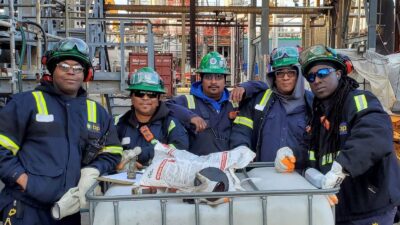When I consider the insurance business, I generally think the sector is really a bit complicated for a novice to get a good grip of, and so you probably shouldn’t venture into it without at least a bit of experience.
But having said that, I do think there are a couple of insurers that have a sufficient track record and a good-enough long-term approach to turn them into tasty possibilities.
One, which I looked at recently and which I have in the Fool’s Beginners’ Portfolio, is Aviva.
Should you invest £1,000 in HSBC right now?
When investing expert Mark Rogers has a stock tip, it can pay to listen. After all, the flagship Motley Fool Share Advisor newsletter he has run for nearly a decade has provided thousands of paying members with top stock recommendations from the UK and US markets. And right now, Mark thinks there are 6 standout stocks that investors should consider buying. Want to see if HSBC made the list?
The other, and one I seriously considered when I made my Aviva decision, is RSA Insurance Group (LSE: RSA) (NASDAQOTH: RSANY.US). The two share a number of similarities.
Dividends, dividends!
The big one in recent years, which many thought was a bad thing, is that both of them slashed their dividends last year. After a few years of squeezed margins and tightening earnings for the industry, RSA’s dividend cover was getting stretched.
The firm could have struggled on and kept its payouts high to please shareholders in the short term, expecting the cyclical nature of insurance to turn back in its favour (as City forecasts did indeed suggest). But no, RSA looked to the longer term and readjusted its split between dividends and retained earnings.
That meant the final payment for 2012 was slashed, but the full-year total of 7.31p per share still provided a handsome 5.8% yield. With the rebasing continuing into 2013, we look to be on for a yield of about 5.4% this time based on today’s 119p share price. That’s a nice income on its own, but it has an added attraction — the highest yields in the FTSE are usually only thinly covered, but RSA’s should now be covered about 1.8 times, with the safety margin improving to twice-covered based on 2014 predictions.
Long term?
Now, this is getting dangerously close to evaluating RSA based on short-term valuation, which I’m largely trying to avoid, so what’s the longer-term picture looking like?
Well, in December 2008, just before the world was plunged into credit crisis and recession, the RSA share price stood at 138p. Today at 119p, you’d be sitting on a 19p, or 14%, loss.
But you would also have collected a total of 43.53p in dividends, including this year’s first-half payment of 2.28p. So your initial investment would now be worth 162.53p per share (assuming you kept the cash and did not reinvest it).
That’s a profit of 18%, which is admittedly not in the get-rich-quick league.
But considering it comes during one of our toughest economic spells in recent history, what it really shows to me is how safe and resilient a company like RSA can be — and safety should be a key watchword for novice investors.
It’s low risk!
A company that takes on risk as its business turns out to present a long-term low-risk prospect for investors, which seems perhaps ironic.
Part of that low risk comes from RSA’s wide geographical diversification — its business is spread around the world. Sure, that doesn’t help much when there’s a global recession, but with the world heading for better times, RSA looks to me like a good bet for someone just starting out.







